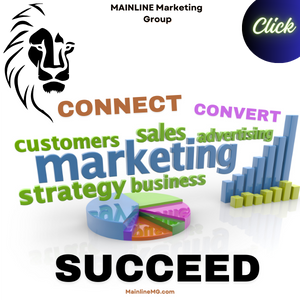- Personalized Marketing Campaigns
- Voice Search Optimization
- AI-Powered Analytics
- Influencer Collaborations
- Video Marketing Strategies
- Content Experience & Personalization
- Omnichannel Marketing
- Chatbots & Automation
- Privacy & Data Security
- Sustainable & Ethical Marketing
1. Personalized Marketing Campaigns
Understanding Customer Data
In 2025, personalization remains a cornerstone of successful internet marketing tactics. By leveraging detailed customer dataâfrom browsing behavior to purchase historyâyou can tailor your messaging to resonate on a personal level. Companies that implement advanced data collection methods see higher engagement rates; for example, Amazonâs recommendation engine generates approximately 35% of its revenue from personalized suggestions.
Effective use of customer data requires transparency and compliance with privacy regulations like GDPR. Implementing user-friendly consent forms and clear privacy policies builds trust while collecting valuable insights.
Another tip is to segment your audience based on behavior, preferences, and demographics. Personalized campaigns not only improve conversion rates but also enhance customer loyalty, fostering long-term relationships. In 2025, businesses that excel at personalization are poised to outperform competitors by at least 25%.
Tools and Technologies for Personalization
Modern tools such as AI-driven content platforms, CRM systems, and machine learning algorithms make creating personalized campaigns easier than ever. Platforms like HubSpot, Mailchimp, and Salesforce incorporate AI features to automatically segment and target audiences effectively.
Implementing dynamic website content and personalized email sequences can dramatically boost engagement. For instance, personalized email subject lines have a 26% higher open rate according to recent research.
Remember, though, that personalization should augment your marketing systemâdata security and customer privacy must always come first.
2. Voice Search Optimization
The Rise of Voice-Activated Devices
With the surge of voice-activated devices like smart speakers and mobile voice assistants, optimizing your content for voice search has become an essential internet marketing tactic for 2025. Statistically, by 2025, over 55% of households are expected to own a smart speaker, making voice search a primary channel for consumer queries.
To optimize, focus on natural language keywords and long-tail phrases that match how people speak, not just type. For example, instead of “best pizza NYC,” use “What is the best pizza place near me in NYC?”
Understanding user intent behind voice queries enables you to craft content that answers questions directly, increasing your chances of appearing in featured snippets.
Implementing Voice Search SEO
Start by conducting voice-specific keyword research using tools like Answer the Public or Google’s People Also Ask. Incorporate these phrases into your FAQ pages or blog content.
Additionally, optimize your website load times and mobile responsiveness, as these factors influence voice search rankings. Google favors quick, mobile-friendly sites in voice search results.
Finally, ensure your local SEO is sharpâmany voice searches are local in nature. Claim your Google My Business profile and encourage reviews to enhance your local visibility.
3. AI-Powered Analytics
Understanding Consumer Behavior
AI-powered analytics tools are transforming how businesses interpret consumer data. In 2025, companies utilize AI to predict purchasing trends, personalize content, and optimize campaigns in real-time. For example, Netflix’s recommendation system, powered by AI, contributes to 75% of viewer activity.
By analyzing vast datasets swiftly, AI can uncover hidden patterns and preferences, guiding more effective marketing decisions. This leads to more targeted ads, higher ROI, and improved customer engagement.
Additionally, AI-driven predictive analytics enable companies to anticipate customer needs, reducing churn and increasing lifetime value.
Choosing the Right Tools
Platforms like Google Analytics 4, Tableau, and advanced marketing automation tools integrate AI capabilities to deliver insights efficiently. These tools allow you to identify key performance trends and adjust your strategies swiftly.
Implementing AI analytics also means testing and refining your campaigns continually. For instance, A/B testing with AI can optimize landing pages and call-to-actions based on user responses.
As AI technology advances in 2025, investing in these analytics tools will be crucial for staying competitive in the digital landscape.
4. Influencer Collaborations
Choosing the Right Influencers
Influencer marketing continues to evolve, and in 2025, partnering with the right influencers can significantly expand your reach. Micro-influencers with niche audiences often deliver higher engagement rates; studies show they generate 60% more engagement per follower than macro-influencers.
Research influencersâ authenticity, audience demographics, and content alignment with your brand. Authentic partnerships foster trust and credibility among target consumers.
Leverage influencer platforms and metrics to measure potential ROI before committing, ensuring you target the most impactful collaborations.
Effective Campaigns and Long-term Partnerships
Design campaigns that authentically integrate your products or services into influencersâ content rather than overt advertisements. Authentic stories resonate better with audiences and drive conversions.
Establish long-term relationships rather than one-off collaborations to build brand loyalty. Consistent influencer advocacy can reinforce your brand message and expand your organic reach.
Measure success through engagement, referral traffic, and conversion metrics, adjusting your approach based on data-driven insights.
5. Video Marketing Strategies
Creating Engaging Video Content
Video marketing remains one of the most powerful internet marketing tactics in 2025 due to its ability to engage users on multiple levels. Short-form videos, live streams, and interactive content drive higher engagement rates.
Platforms like TikTok, YouTube Shorts, and Instagram Reels dominate content consumption patterns. For example, 85% of businesses report increased engagement after integrating video into their marketing plans.
Craft compelling stories, use high-quality visuals, and include clear calls-to-action to maximize impact.
Optimizing Videos for SEO
Optimize video titles, descriptions, and tags with relevant keywords. Adding captions and transcripts can improve accessibility and search visibility.
Embed videos on your website and share across social channels to increase reach. Consistent branding and messaging create a cohesive experience for viewers.
Donât forget to analyze performance metrics to understand which types of videos resonate most with your audience, refining your strategy over time.
6. Content Experience & Personalization
Enhancing User Journey
Creating a seamless, personalized content experience helps keep visitors engaged and converts leads into customers. Use AI tools to analyze user behavior and tailor content in real-time.
Interactive content such as quizzes, polls, and personalized recommendations can increase time spent on your site and improve satisfaction.
In 2025, a focus on customer-centric content experience can lead to a 30% increase in conversions, according to recent studies.
Implementing Content Personalization
Segment your audience based on data to deliver customized website experiences. For example, showing relevant blog posts, product recommendations, or offers tailored to individual needs.
Utilize advanced CMS platforms that support personalization to automate content delivery based on user profiles and behaviors. Examples include Optimizely or Adobe Experience Manager.
Ensure your content remains valuable, relevant, and non-intrusive to foster trust and deepen customer relationships.
7. Omnichannel Marketing
Providing a Unified Customer Experience
In 2025, delivering a consistent brand experience across all channelsâwebsite, social media, email, and offlineâis crucial. Omnichannel marketing ensures your message is seamless, leading to increased brand loyalty.
Use integrated data platforms to track customer interactions and preferences across channels. This enables targeted messaging and timely engagement.
Customers who experience cohesive branding are 30% more likely to make repeat purchases, according to recent research.
Strategies for Successful Omnichannel Campaigns
Coordinate marketing efforts by creating content calendars that align across platforms. Automate workflows to maintain consistency and efficiency.
Leverage retargeting strategies to re-engage visitors who interacted on one channel across others. For example, retarget website visitors with personalized ads on social media.
Regularly monitor KPIs like customer retention and channel performance to optimize your omnichannel approach.
8. Chatbots & Automation
Enhancing Customer Support
Automated chatbots have become standard in 2025, providing 24/7 support and instant responses. They handle FAQs, guide users through sales funnels, and collect feedback efficiently.
Deploy chatbots on your website and social media platforms to improve customer experience and free up your team for complex tasks.
According to latest industry stats, businesses using chatbots reduce customer service costs by up to 30% while increasing customer satisfaction.
Marketing Automation Strategies
Automation tools streamline email marketing, social media posting, and lead nurturing. Drip campaigns can deliver personalized messages based on user actions, boosting conversions.
Use workflows that trigger based on behavior, such as cart abandonment or content engagement, to deliver timely, relevant content.
Continuously analyze automation performance and refine your sequences to improve outcomes in 2025âs competitive landscape.
9. Privacy & Data Security
Building Customer Trust
The importance of privacy and data security continues to grow. In 2025, respecting user privacy and complying with regulations like GDPR, CCPA, and emerging standards is critical for maintaining trust.
Transparent communication about data collection and usage policies helps build consumer confidence, fostering long-term relationships.
Failing to prioritize security can lead to brand damage and legal penalties. For example, data breaches cost companies an average of $4.24 million in 2025, emphasizing the need for robust security measures.
Implementing Security Measures
Employ encryption, secure servers, and regular audits to protect customer information. Educating your team on data security best practices is equally essential.
Invest in compliance tools that automate privacy management and provide audit trails.
By proactively managing privacy and security, your brand can stand out as trustworthyâa vital internet marketing tactic in 2025âs digital environment.
10. Sustainable & Ethical Marketing
Aligning with Consumer Values
In 2025, customers increasingly prefer brands that demonstrate social responsibility and ethical practices. Incorporating sustainability into your marketing strategy enhances brand perception.
Share authentic stories about your companyâs efforts in environmental conservation, community support, and ethical sourcing.
Statistics show that 70% of consumers are willing to pay more for sustainable brands, making this a vital internet marketing tactic for growth.
Best Practices for Ethical Marketing
Be transparent about your sustainability initiatives, and avoid greenwashing. Ensure your claims are backed by verifiable actions.
Engage your community in sustainability efforts through campaigns and partnerships, fostering stronger emotional connections.
Incorporating sustainable practices into your business model not only benefits society but also enhances your brandâs long-term viability in 2025.
Conclusion
Staying ahead in the fast-evolving world of digital marketing in 2025 requires a strategic approach rooted in proven internet marketing tactics. From personalized campaigns and voice search optimization to AI analytics and sustainable practices, each of these strategies plays a vital role in boosting your results. Remember, the keystone of success lies in understanding your audience, leveraging cutting-edge technology, and maintaining transparency and ethics. Implementing these ten internet marketing tactics will help you reach your business goals effectively in 2025 and beyond. As I always say, mastering these internet marketing tactics is essential for sustainable growth in todayâs competitive online landscape.
Frequently Asked Questions
1. What are the most effective internet marketing tactics for 2025?
Effective tactics in 2025 include personalization, voice search optimization, AI analytics, influencer collaborations, and omnichannel marketing. Focusing on customer experience and data security is also crucial.
2. How can I improve my content marketing in 2025?
Enhance your content marketing by creating engaging videos, optimizing for voice search, personalizing content, and delivering a seamless omnichannel experience. Data-driven insights and AI tools will further amplify your efforts.
3. Why is personalization important in internet marketing tactics?
Personalization increases engagement, conversion rates, and customer loyalty. In 2025, consumers expect tailored experiences, making personalization a vital component of successful marketing strategies.
4. How does AI impact internet marketing tactics in 2025?
AI enables better data analysis, predictive insights, content personalization, and automation. These capabilities lead to more targeted campaigns that yield higher ROI and improved customer relationships.
5. What role does data security play in online marketing strategies?
Data security fosters trust and complies with legal regulations. Prioritizing privacy and security helps maintain your brandâs reputation and ensures long-term customer relationships.


